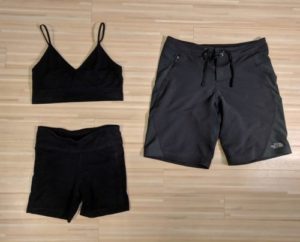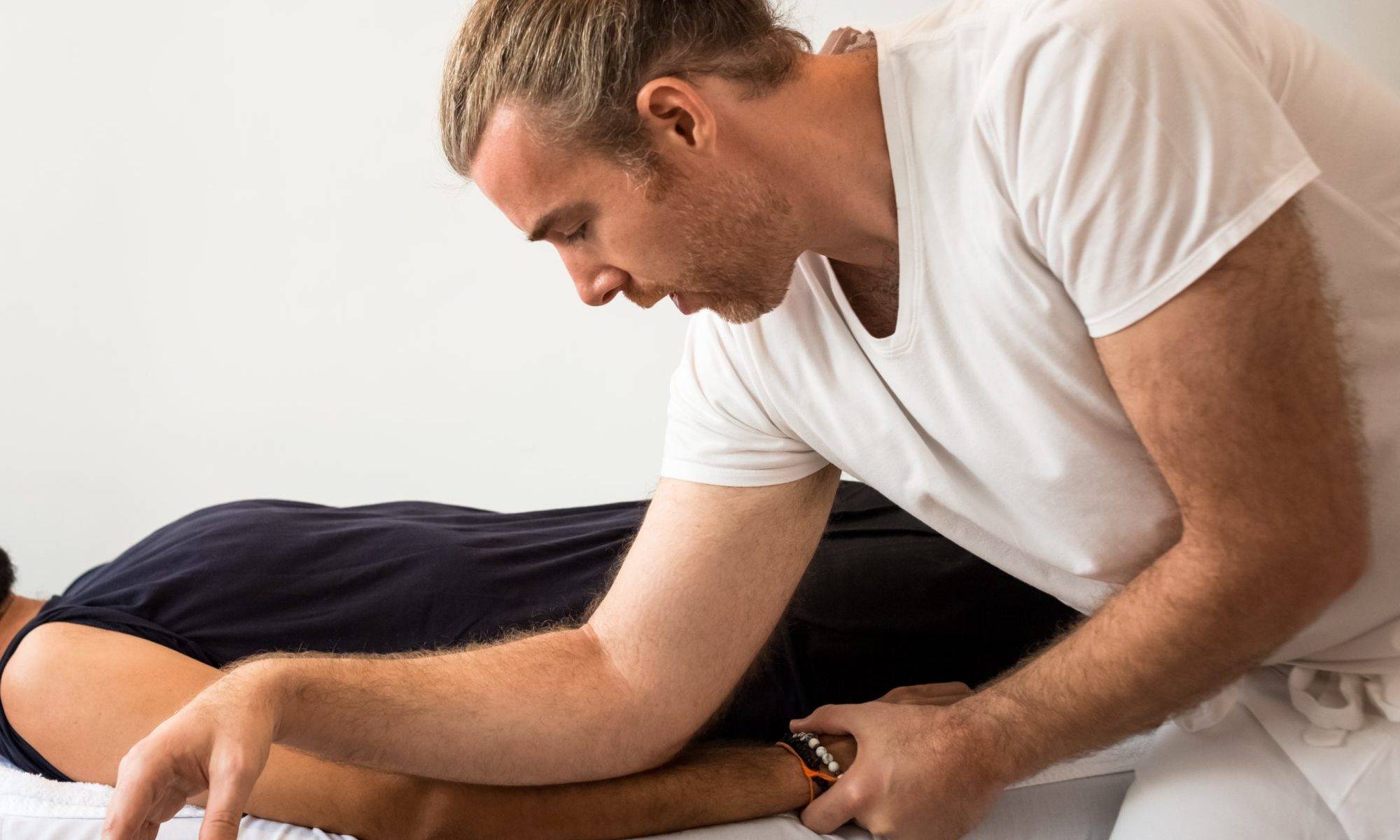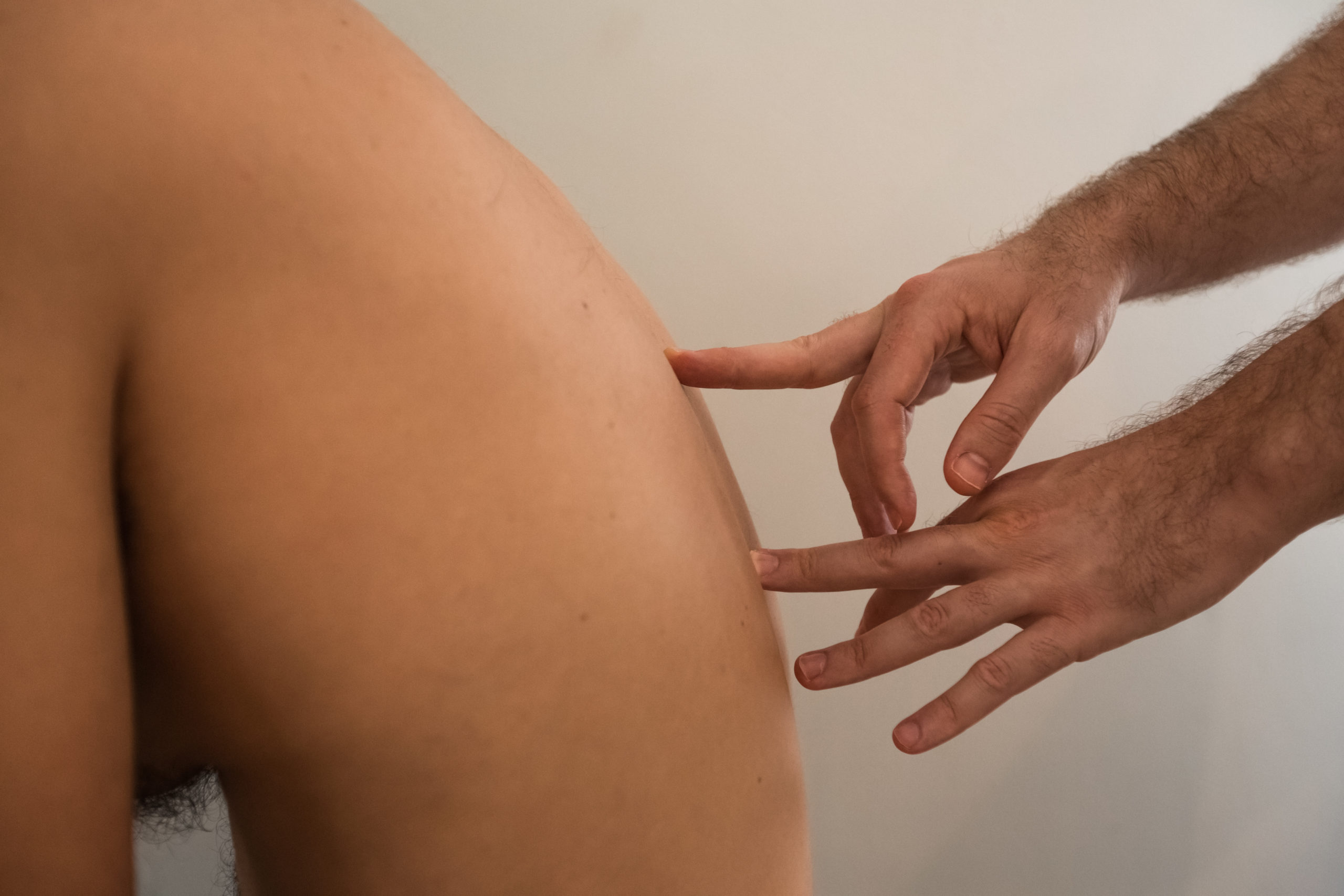Who should receive Rolfing?
People from all walks of life will benefit from Rolfing. It helps acute and chronic structural pain. It is also great upkeep for the body, helping to maintain flexibility and range of motion. Many people find they gain increased body awareness, allowing them to avoid the movements and patterns that caused them injury in the past
Does Rolfing hurt?
Often times, the first thing people hear about Rolfing is that it hurts. When Rolfing was popularized in the 1970’s, it developed a reputation of being very painful. A lot has changed since then. Rolfing has refined its approach and developed a way of working with the body that can produce lasting change through a level of touch that is appropriate to each individual client. Some people experience no discomfort whatsoever during their Rolfing sessions. I work in communication with the client, responding to the client’s needs throughout the session and should discomfort arise we are in dialogue and will find ways to sort the underlying issue out without pain. There may be certain level of intensity, but we always work at a level that feels suitable to the client. (See below for a longer explanation.)
Is Rolfing like chiropractic or massage?
Chiropractic focuses on freeing spinal joint restrictions and promoting nerve flow to and from the spine. It does not address the soft tissue patterns of the whole body and their influence on structural balance. Rolfing uses soft tissue techniques to treat bone-to-bone restrictions that are a part of the overall body pattern. Rolfing and chiropractic care are compatible and can be complimentary.
Massage is a broad term that refers to many styles of bodywork. In general, massage promotes relaxation and blood flow. Some “deep tissue” massage works to release local patterns of structural strain, but this is not usually done as part of a strategy to balance the whole body. Although massage is relaxing, you may find the same area bothering you again shortly after you leave the office. This is because the area that hurts is often a compensatory or secondary issue, which massage doesn’t address.
What can I expect to feel between sessions?
The first few days after a session are usually the time of greatest change. Somewhat like the first day after heavy exercise, you may feel a bit sore the next day. After that you may experience ongoing shifts in balance and awareness. Most people experience feelings of lightness, ease of movement and improved comfort.
Does it last?
Yes. One of the highlights of the Rolfing series is that it produces lasting change throughout the body.
Do I have to do ten sessions?
No, you do not. The ten-series is designed to address the entire body, but we can customize the number and type of sessions to work for your goals. People often find lasting benefit froThe 10-series is a wonderful way to achieve whole body, lasting changes. It is the original form in which Ida Rolf taught and practiced. That said, great benefit can be gained from single sessions and shorter series. Shorter series can also be great tune-ups for those who have received a 10-series in the past. We can find an option that works for you.
How often should I come?
Most people find once a week to be a beneficial and convenient time frame. However, others find that they respond better to the work if they have more time between sessions to settle in to the new patterns of their body.
How long is each session?
Initial visits often run around 90 minutes to take time for a detailed health history and general questions. Following sessions generally last from 75 -90 minutes.
What should I wear?
The most important thing is for you to be comfortable. Traditional massage draping is not done in Rolfing, but there are always sheets and blankets available.

For Women: Underwear and bra or a two-piece swimsuit, loose running shorts and a tank top, or yoga wear.
For Men: Underwear or loose running shorts.
I keep hearing that Anatomy Trains is the same as Rolfing. Is this true? If not, what are the differences between Anatomy Trains and Rolfing, and how do their treatment approaches differ?
Anatomy Trains presents a theoretical framework for understanding the connectivity of the body’s fascial network. Developed by a former Rolfer, this model is based on a set of fascial lines that practitioners are taught to apply universally. This standardized approach can potentially overlook individual variances in development, body structure, and fascial connections. Although it offers a structured method to assess and approach bodywork, it may not cater to the unique needs of each individual. Notably, while the founder was developing Anatomy Trains, even as he taught anatomy at the Rolf Institute, the institute chose not to incorporate it into its curriculum for various reasons. Its marketing has been particularly effective, especially in New England, making it more widely recognized.
Rolfing, created by Dr. Ida Rolf, is a form of bodywork that emphasizes a highly personalized approach. Rolfing practitioners do not adhere to a universal template. Instead, they assess and respond to the specific physical presentations and needs of the person in front of them. This method may involve a range of techniques, from deep tissue manipulation to gentler methods that encourage the nervous system to facilitate internal changes. Rolfing is tailored to improve each client’s posture, reduce pain, and enhance overall movement efficiency, based on their unique physical conditions and needs.
In summary, while Anatomy Trains provides a standardized educational approach based on predefined conceptual fascial lines, Rolfing offers a more flexible and person-centric therapy. Rolfing focuses on the unique contours and health challenges of each client, leading to more effective and individualized treatment outcomes.
“Is Rolfing Helpful For Trauma?”
Rolfing, as traditionally practiced, can be both helpful and limiting for trauma. Its focus on physical alignment and structural integration often helps release tension and improve body awareness, which can support trauma recovery. However, traditional Rolfing may not always address the nuanced and layered nature of trauma stored in the nervous system or subcortical structures. My approach expands on traditional Rolfing by incorporating somatic and trauma-informed practices, creating a safer and more adaptive space for the body to process and integrate these experiences. This broader perspective allows me to meet clients where they are, working gently with the patterns held in and around the body to foster healing at a deeper level.
Does Rolfing Doesn’t Need to Be Painful and If Not Why Are So Many Practitioners Still Causing Pain?
Rolfing has often been associated with a “no pain, no gain” mentality, but it doesn’t have to be that way. This misconception is not just common among laypeople; many practitioners themselves haven’t learned some of the crucial points outlined below, which are essential to the actual Rolfing process. The belief that Rolfing must be intense or painful to be effective overlooks the core principles of the work and the profound benefits of a more sensitive and supportive approach.
1. Aligns with Modern Understanding of Pain Science:
Current pain science emphasizes that pain does not necessarily correlate with the severity of an issue and that pain-free techniques can be just as, if not more, effective. A thoughtful Rolfing approach aligns with these insights, offering a respectful and effective way to work with the body without pushing it into discomfort.
2. The Body Responds Better to Ease:
Pain and discomfort can trigger the body’s defense mechanisms, causing muscles to tense up and resist the work. A sensitive approach respects the body’s natural rhythms and encourages a more relaxed response, allowing for deeper and more lasting changes without the need for force. This stands in stark contrast to the aggressive methods that often lead to resistance rather than release.
3. Sensitivity is About Using the Senses:
A sensitive approach in Rolfing is not just about being gentle but about deeply tuning into the body’s signals through the senses. It involves working at the edge where the body begins to signal that pain or restraint is near, allowing us to work effectively without crossing into painful territory. This approach acknowledges that discomfort may still arise as we explore the boundaries of movement and sensation, but it stops short of pain, promoting a space where the body can adjust and release without feeling overwhelmed.
4. Aligns with Neuroscience Principles:
Modern neuroscience highlights the interconnectedness of the body and brain, emphasizing that how we experience touch and pressure can influence our overall nervous system regulation. By adopting an approach that is sensitive, supportive, and non-threatening, Rolfing can help recalibrate the nervous system, reducing chronic tension and promoting a state of balance. This aligns with the understanding that the brain continuously interprets bodily sensations, and a positive, non-painful experience can lead to more effective outcomes.
The Allure and Limitations of Painful Approaches:
Pain and brute force can initially feel exciting—there’s a short fuse and a loud bang that may give the perception of significant progress. However, this approach often leads to temporary relief that needs to be repeated later because it fails to reach the deeper layers where true, lasting change occurs. The immediate intensity can trick us into believing we’re making progress, but this excitement is often short-lived. By contrast, a sensitive and thoughtful approach fosters sustainable transformation, allowing the body to integrate changes more fully without the need for repeated interventions. It may be less flashy, but it’s clinically proven to produce longer-lasting change.
Connecting with the Nervous System for Deeper Impact:
5. Enhances Nervous System Regulation:
A supportive approach helps the nervous system shift from a state of fight-or-flight to rest-and-digest, which is crucial for integrating changes on a deeper level. This regulation leads to improved overall well-being, reduced stress, and a greater sense of ease in the body, making the work more sustainable and impactful.
6. Builds Trust and Safety:
This approach also fosters a sense of safety and trust between the practitioner and client, essential for effective bodywork. When the client feels secure, they are more likely to be open to the work, allowing for a collaborative and responsive session that respects their boundaries and comfort.
Promoting Informed Practice and Client Agency:
7. The Importance of Staying Informed:
Unfortunately, many practitioners are not up to date on the latest pain science and neuroscience, leading them to apply painful techniques under outdated beliefs. By staying informed and integrating modern understandings into practice, the work can honor the client’s experience, focusing on sensitivity and support rather than force. Staying current with the science not only improves outcomes but also respects the evolving nature of bodywork and client care.
8. Promotes Agency and Reduces Power Dynamics:
The traditional “no pain, no gain” approach often involves a power dynamic where the practitioner exerts control over the client’s experience, which can undermine the client’s sense of agency. In contrast, a supportive and thoughtful approach prioritizes collaboration and empowers clients to be active participants in their own healing journey, promoting agency and self-awareness. This shift from practitioner-led to client-empowered sessions fosters a more effective and respectful therapeutic relationship.
Fostering Lasting Change:
9. Encourages Sustainable Change:*
Rather than pushing through pain, a sensitive approach works with the body’s innate intelligence, allowing changes to unfold in a way that feels natural and sustainable. This can lead to more profound and lasting transformations as the body integrates changes without the trauma of pain.
In Rolfing, the goal is not just to manipulate tissue but to work with the whole person, including their comfort and nervous system response. By approaching the body in a sensitive, supportive, and thoughtful manner, Rolfing can be a deeply transformative experience without the need for pain, empowering clients to engage fully in their own healing process.

